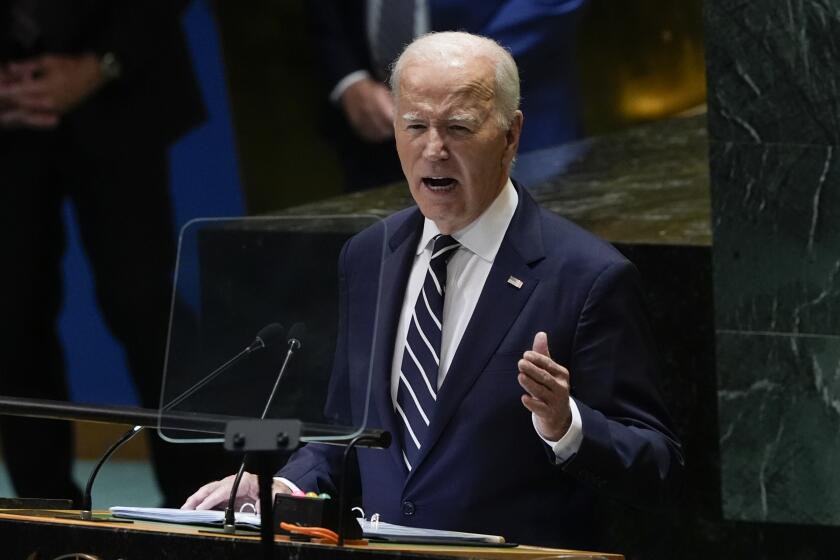After the switch to generics, then what?
Faced with stiff financial penalties when they opt for a more expensive drug (or one not approved by their insurance company), insured patients rarely complain when their pharmacist dispenses the cheaper generic. Many patients do not even notice the switch until they open their pill bottle and see a tablet that differs in shape or color from the one they have been taking.
Mark Autrey was one of those patients. Since 2004, Autrey, 52, had controlled his high blood pressure with Toprol XL, a brand-name medication made by AstraZeneca. So had his elderly mother, for whom Autrey is a caregiver in Villa Rica, Ga. Last summer, Autrey came home from the pharmacy with a generic version of Toprol XL that both he and his mother took.
At first, the only change Autrey noticed was the price of the drug -- a change he welcomed. Within a few weeks, though, he noticed unusual spikes in his mother’s blood pressure. Feeling “a little off-key” and more tired than usual, he checked his own as well, and began noticing elevated levels he hadn’t seen in years. His mother’s physician was adamant that Autrey refill his mother’s prescription with the brand-name product on which her blood pressure had been stabilized, and suggested Autrey switch back also.
Switching from a long-used brand-name drug to its generic counterpart -- or from a generic made by one company to a generic made by another -- patients should follow the same advice they receive when making any change to their medicines, says R. William Soller, a professor of pharmacology at the UC San Francisco School of Pharmacy.
To use one of Ronald Reagan’s famous phrases, patients should “trust, but verify” that a new medicine is doing the job. That may mean checking blood pressure, blood-sugar levels or mood a bit more often for a few weeks, and alerting the prescribing physician of any changes.
(The same advice would apply to patients switching from a generic drug to its brand-name equivalent, Soller says. But with insurers discouraging such shifts, that’s a change few patients will be making.)
There is little doubt that generic drugs save money. An increase of just 1% in Americans’ use of generics would save consumers and taxpayers $4 billion per year, according to the Generic Pharmaceutical Assn.
But the physicians who care for patients who jump -- or are pushed -- to generics are sometimes not as impressed with the resulting cost savings. They caution that extra blood tests or office visits that might be needed when a patient switches often offset some of the savings that come with taking a less expensive drug. And if the patient’s generic substitute does not work as well as the pioneer drug that first brought the symptoms under control, physicians say they have major headaches: They face increased liability for the patient’s worsened condition and, if they want to switch the patient back to a brand-name drug, a mountain of paperwork to justify their clinical judgment to insurance companies.
All that, and they have a sick patient whose condition must be stabilized all over again on a generic drug or re-stabilized on the brand-name medicine with which they began.
“Practicing physicians absorb the cost and liability of prescribing therapeutic substitutes at the whim . . . of the health plan providers, whose sole motivation is to wring out every cent of cost savings possible for the benefit -- i.e., the profit -- of the plan,” said Dr. Dean J. Kereiakes, chief executive and research director of the Ohio Heart & Vascular Center in Cincinnati. “I have never been harassed to the point where I currently am from insurance companies. . . . This is the most obnoxious racket that I’ve ever been involved in.”
It’s sometimes no picnic for patients either. As generic alternatives to a popular brand-name drug proliferate, patients face confusion, uncertainty and risk. Insurance companies and pharmacies may shift their preferred supplier of a given generic drug from month to month to reap cost savings and pass them on to the consumer. One month, a patient with high blood pressure may be dispensed a pink pill made by one generics manufacturer and the next month, a gray caplet made by another.
Not only is the patient switching from one company’s formulation to that of another, often, befuddled patients think they are expected to take both, risking overdose, said Dr. Gerald Naccarelli, chief of Pennsylvania State’s medical center’s division of cardiology. He said he has seen it happen.
The Food and Drug Administration is categorical in its defense of generics. In an April 2007 policy statement, Steven Galson reiterated the FDA’s long-standing position that once the agency has deemed a generic to be interchangeable, physicians and patients can switch without additional clinical tests or exams. Galson, then director of the FDA’s Center for Drug Evaluation and Research, rejected concerns that certain classes of drugs, including those that must be dosed with extreme precision, should be approached with any greater caution.
“Products evaluated as therapeutically equivalent will produce the same clinical effect whether the product is a brand-name or a generic drug product,” wrote Galson in a letter to the National Assn. of Chain Drug Stores.
As for Autrey, he now pays more to buy the brand name Toprol XL than what he’d pay for the generic counterpart. He says his blood pressure has returned to its earlier consistency. But he’s angry that no one warned him to look for differences and that his insurance company would penalize him for responding differently to a drug that’s supposed to be the same.
“It’s irritating to me that the guinea pigs -- the patients themselves -- are having to demand that this is different, to prove that it’s different, and to pay all that extra while they figure it out,” he said.
More to Read
Sign up for Essential California
The most important California stories and recommendations in your inbox every morning.
You may occasionally receive promotional content from the Los Angeles Times.











